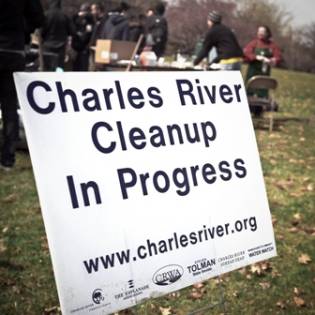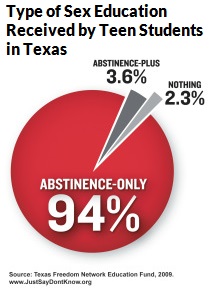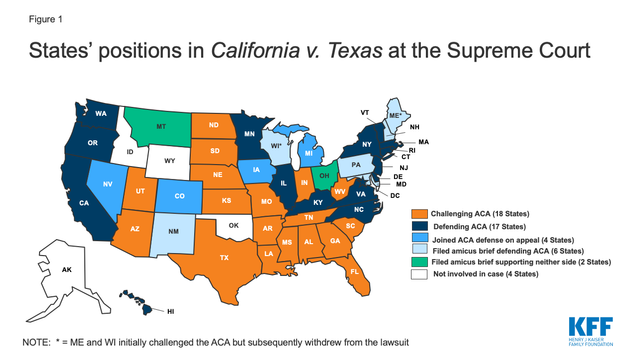Fighting the Federal Government: California’s Mission to Stop Environmental Rollbacks
In July of 2020, California passed the historic Clean Trucking Rule, the first of its kind in the world. The rule requires manufacturers to sell increasing percentages of zero-emission trucks in the state. While many have applauded the action, the Trump administration was not a fan of the rule. California and the Trump administration have been at odds for years, as California has attempted to make up for the lack of climate action at the federal level. Over just four years, President Trump’s administration reversed over 100 environmental rules and regulations. To make up for the loss, California has passed numerous regulations and initiated at least twenty-four lawsuits to halt the Environmental Protection Agency’s (“EPA”) rollbacks. California, given its unique legal status on environmental issues, has proven itself to be a clear leader on climate action and emission reduction.
The Clean Air Act
When it comes to the climate, California is not restricted by Constitutional provisions such as the Commerce and Preemption Causes. The Clean Air Act (“CAA”), first passed in 1970, gives the federal government the ability to regulate pollutants that are emitted into the ambient air and prohibits states from adopting or attempting to enforce any of their own motor vehicle emission controls. However, section 209(b) of the CAA allows states that had adopted standards prior to 1966 could apply for a waiver to that prohibition; and only California qualified. California was the first state to attempt controlling auto pollution and needed the ability to adopt more stringent controls to address the state’s extreme smog problem. To set new motor vehicle emissions standards, California must apply for a waiver from the EPA. The EPA administrator shall grant the waiver unless the standard is (1) arbitrary and capricious, (2)is not needed for compelling and extraordinary conditions, or (3) is not consistent with the CAA. Since 1970, administrators have consistently granted California its waivers. One exception was a waiver for new emissions restrictions on vehicles starting in 2009 that was initially denied in 2008, but President Obama later reversed the denial. This waiver program has created numerous California programs that differ from federal standards, including the Zero Emissions Vehicles (“ZEV”) Program, The Advanced Clean Cars program, and Low Emission Vehicles (“LEV”) Standards.
Under section 177 of the CAA, other states can choose to adopt either the current federal regulations or the California regulations if that will help the state achieve the CAA requirements more efficiently. As of August 2019, fourteen states have adopted portions of California’s ZEV and LEV programs.
California’s New Rule
The California Air Resources Board (“CARB”) established the Advanced Clean Truck Program. The program requires that
beginning in 2024 manufacturers sell zero-emission trucks— that is electric and fuel cell powered trucks—as an increasing percentage of their annual California sales. Zero emission trucks need to make up 55% of Class 2b – 3 truck sales, 75% of class 4 – 8 straight truck sales, and 40% of truck tractor sales by 2035. Massachusetts and seven other states have pledged to follow California’s lead for medium and heavy duty trucks. Additionally, fifteen states and Washington D.C. have signed a memorandum of understanding pledging to each develop an action plan to support widespread electrification of medium and heavy duty vehicles.
With these monumental steps forward, the federal government started to push back. The Trump EPA and National Highway Traffic Safety Administration (“NHTSA”) issued a final rule titled the “One National Rule Program,” which finalized parts of the Safer, Affordable, Fuel-Efficient (“SAFE”) Vehicles Rule that was first proposed in August 2018. The action makes clear that federal law preempts state and local tailpipe greenhouse gas emissions standards as well as ZEV mandates. As soon as President Biden took office, however, he ordered federal agencies to reexamine these changes.
The EPA and California’s Rule
 The California rule is set to take effect in 2024, but a waiver must be approved by the EPA beforehand. The EPA has never gone through a denial of a California waiver before, but that has not stopped the Trump Administration from trying to revoke previously granted waivers for zero emission passenger vehicle standards. The EPA is pursuing the revocation of California’s 2013 preemption waiver for greenhouse gas emissions and ZEV programs. This revocation is currently being challenged in court. If former President Trump won the 2020 election, the EPA may have tried to deny California’s zero emission truck regulations waiver. The EPA, however, would have faced an uphill battle because there is clear evidence that reducing emissions is necessary to help California achieve its CAA goals. California’s argument would have been bolstered by the recent wildfires that destroyed large swaths of the state. It was unlikely the EPA could have offered enough solid evidence to uphold their waiver denial. In addition, most legal experts agree that California, and the states that follow their regulations, had a strong case that the Trump Administration’s efforts were unlawful. Still, the changing balance on federal appeals courts and the Supreme Court could undermine California’s waiver process and spell the demise of the original purpose and intent of the CAA. For the time being, however, California and allied states continue to have a valuable tool to fight climate change and reduce emissions across the entire nation regardless of who controls the EPA.
The California rule is set to take effect in 2024, but a waiver must be approved by the EPA beforehand. The EPA has never gone through a denial of a California waiver before, but that has not stopped the Trump Administration from trying to revoke previously granted waivers for zero emission passenger vehicle standards. The EPA is pursuing the revocation of California’s 2013 preemption waiver for greenhouse gas emissions and ZEV programs. This revocation is currently being challenged in court. If former President Trump won the 2020 election, the EPA may have tried to deny California’s zero emission truck regulations waiver. The EPA, however, would have faced an uphill battle because there is clear evidence that reducing emissions is necessary to help California achieve its CAA goals. California’s argument would have been bolstered by the recent wildfires that destroyed large swaths of the state. It was unlikely the EPA could have offered enough solid evidence to uphold their waiver denial. In addition, most legal experts agree that California, and the states that follow their regulations, had a strong case that the Trump Administration’s efforts were unlawful. Still, the changing balance on federal appeals courts and the Supreme Court could undermine California’s waiver process and spell the demise of the original purpose and intent of the CAA. For the time being, however, California and allied states continue to have a valuable tool to fight climate change and reduce emissions across the entire nation regardless of who controls the EPA.
 Conner Kingsley anticipates graduating from Boston University School of Law in May 2021.
Conner Kingsley anticipates graduating from Boston University School of Law in May 2021.
A More Perfect Election: Which COVID Election Reforms Massachusetts Should Keep And What Needs To Be Fixed
While the COVID-19 pandemic will no doubt be remembered as one of our nation’s most tragic events there may be at least one bright spot that emerges from an otherwise catastrophic era: a ground up rethinking of elections systems. It’s was not ideal timing; many voters believed that the 2020 general election was the most important in a generation and also feared that mass voting system reform would wreak havoc. Nevertheless, the COVID-19 election experience offers the opportunity to create needed and lasting improvements to our electoral system.
The Massachusetts Legislature prepared for the pandemic election by passing “An Act Relative to Voting Options in Response to Covid-19” a few months before the September 1, 2020 primary. The Act provided for early voting before the primary and greatly  expanded access to mail-in voting for both the primary and general election. Most of the Act’s provisions expired on December 31, 2020, but this may be for the best; the Legislature should develop a more permanent election reform bill during the new legislative session. Below are provisions lawmakers should keep—and scrap.
expanded access to mail-in voting for both the primary and general election. Most of the Act’s provisions expired on December 31, 2020, but this may be for the best; the Legislature should develop a more permanent election reform bill during the new legislative session. Below are provisions lawmakers should keep—and scrap.
KEEP: No-excuse vote-by-mail option for both primary and general elections.
Current Massachusetts law allows no-excuse mail-in voting only for biennial general elections. In other elections a voter must be either absent from their municipality or physically disabled to qualify for mail-in voting. The recent act allowing mail-in voting for the primary should become the norm. Of the estimated 18.9 million registered voters who did not cast a ballot in 2016, 19.3% percent cited reasons (see table 4) such as transportation problems, busy schedules, inconvenient polling places—and another 3% simply forgot. When Colorado implemented all-mail voting in 2014, election turnout increased 9.4% overall. The biggest gains were with traditionally low turnout groups: younger voters (16.6% increase), blue-collar workers (10%), and minority voters (13.2% for Black voters, 10% for Latinx voters, and 11.2% for Asian voters). Utah and other states increasing vote-by-mail saw similar increases in turnout. This year, 1,705,388 voters participated in the Massachusetts primary; the highest raw vote count ever for a primary. Granted, there was great voter enthusiasm due to contentious US Senate race between Senator Ed Markey and Congressman Joe Kennedy, but a lot of credit should go to the COVID-19 election reforms since about half of the ballots were sent by mail. In a state where non-Presidential Primary elections have peaked around 26% in the last 30 years, there’s no doubt that mail-in balloting is the way to keep this number rising in future.
SCRAP: Mail-in Ballot Applications.
Currently, Massachusetts requires voters to fill out and return an application to receive their mail-in ballots. Legislators should scrap this unnecessary and costly hurdle and join 10 other states that mail ballots to all registered voters.
First, the application requirement costs the Commonwealth a lot of money. Undoubtedly, the state made the right move by mailing applications to every voter—but paid postage for at least 4.6 million pieces of mail one-way, and millions more that were returned. There is also the cost of labor to prepare the mailings and process the returned applications. Secretary of the Commonwealth William Galvin estimated that each of the two mailings cost around $5 million.
Secondly, mail-in ballot applications are a superfluous hurdle to casting a vote in a primarily mail-in election regime. To a voting populace that already has difficulty meeting registration deadlines or remembering election day, an application requirement presents yet another step to forget and a deadline that can easily be missed. Mailing ballots directly to voters eliminates this unnecessary barrier to entry and ensures that every voter receives a ballot in a timely manner, no hoop-jumping required.
KEEP: Ballot Drop Boxes.
The July bill added the option of returning mail-in ballots “via a secured municipal drop box.” This was a huge win for both busy voters who are skeptical of the USPS and for the Commonwealth, which saves money on the return postage. This is a long-term change reflected in the written statutes and should be a positive change in all future elections!
SCRAP: Election Day Deadline for Receiving Ballots.
Current Massachusetts law only allows counting late ballots if they come from overseas. In the COVID Act, the legislature adopted a 3-day extension for ballots postmarked by election day for the November general election, but not the primary election. This distinction lead to an unsuccessful legal challenge by a candidate in the Democratic race for the Fourth Congressional District. 8,000 ballots were later rejected for arriving past the deadline. Given the recent problems with the USPS, the election day receipt deadline simply won’t cut it.
The 3-day window was a good starting point, but it is falls woefully short of the laws in other states. In 2020, 24 states have receipt deadlines of at least 5 days, and of those, 14 states allow ballots to be counted even beyond 5 days. It’s difficult to pinpoint the appropriate amount of time needed here in the Bay State without more data, but there’s no reason that progressive Massachusetts should have anything shorter than a 5-day late ballot allowance.
BONUS: Add extended cure period for defective mail-in ballots.
It’s unavoidable that a certain amount of ballots will be returned unsigned or in the wrong envelope. In September, at least 3,000 ballots were discarded because of a defect. Although Massachusetts is one of 18 states with a “cure provision” that allows voters to fix the defect with their mail-in ballot, there is room for improvement. In 2020, when the clerk received a defective mail-in ballot, the official must mail the voter a form explaining that their ballot was rejected and a substitute ballot, but only if “there is clearly []sufficient time for the voter to return another ballot.” (950 C.M.R. § 47.10(5)(b)).
Massachusetts should make two important changes to ensure every voter has their ballot counted. First, change the methods of notification. Massachusetts should copy Hawaii and Rhode Island and allow election officers to notify voters of a defective ballot by first-class mail, telephone and email. Second, allow voters to cure their ballot past election day. Other states offer anywhere from 2 to 14 days for voters to fix any defects in their ballots. These measures should help to close that final gap between ballots cast and votes counted.
There are positive signs that Massachusetts could be moving towards a primarily mail-in election future. Hopefully, the legislature will mitigate the pitfalls from this year’s attempt and incorporate successful policies used by other states to ensure that all voters have a meaningful opportunity to participate.
 Emily Swanson anticipates graduating from Boston University School of Law in May 2022.
Emily Swanson anticipates graduating from Boston University School of Law in May 2022.
Shifting Baselines are a Double-Edged Sword: Why Climate Advocates Must Honor Our Environmental Laws In Shaping Climate Policy
In his 1970 state of the union address, Richard Nixon said, “we still think of air as free. But clean air is not free, and neither is clean water. The price tag on pollution control is high. Through our years of past carelessness, we incurred a debt to nature, and now that debt is being called. The program I shall propose to Congress will be the most comprehensive and costly program in this field in America’s history.” President Nixon later signed bipartisan legislation establishing Environmental Protection Agency.
EPA efforts implementing laws such as the Clean Air Act and the Clean Water Act have greatly reduced pollution throughout the United States. Enforcement of the CAA has reduced aggregate national emissions of the six common pollutants by 73 percent. At the same time, gross domestic product grew by 324 percent. The CWA has had a rockier implementation – Flint Michigan still doesn’t have clean water – but has nevertheless had a significant impact on reducing water pollution.
United States. Enforcement of the CAA has reduced aggregate national emissions of the six common pollutants by 73 percent. At the same time, gross domestic product grew by 324 percent. The CWA has had a rockier implementation – Flint Michigan still doesn’t have clean water – but has nevertheless had a significant impact on reducing water pollution.
Unfortunately, Americans are already forgetting that clean air and clean water is not a guarantee or a constitutional right, due in part to the phenomenon known as shifting baseline syndrome. It suggests that something that was abnormal in the past, becomes the new normal, or baseline, for a generation of individuals, who then collectively forget the past baselines.
First explained in 1995, this cognitive theory has gained traction in the climate community to explain public antipathy towards action on climate change. It suggests that as average temperatures and associated climate effects slowly increase over time, individuals will fail to recognize the danger that the climate crisis poses, and collective action may fail to materialize as a result. Climate activists fear that no specific event will motivate action similar to the environmental crises in the 1970’s, and like a lobster in a pot of boiling water, we won’t realize what is happening until it is too late.
 Shifting baselines, however, are not limited to present climate effects, but also work to undermine public support for current environmental laws and regulations that continue to reduce pollution in the present day. In 1995, for example, EPA embarked on an ambitious project to cure 400 years of environmental degradation and make the Charles River swimmable and fishable again, pursuant to its authority under the Clean Water Act. While those goals have not fully been achieved – EPA does not advise swimming on some days, and fishermen can only catch, then release fish – the monumental efforts have reduced source pollution from raw sewage flows and have led to a 99.5% reduction in source contributions to the river.
Shifting baselines, however, are not limited to present climate effects, but also work to undermine public support for current environmental laws and regulations that continue to reduce pollution in the present day. In 1995, for example, EPA embarked on an ambitious project to cure 400 years of environmental degradation and make the Charles River swimmable and fishable again, pursuant to its authority under the Clean Water Act. While those goals have not fully been achieved – EPA does not advise swimming on some days, and fishermen can only catch, then release fish – the monumental efforts have reduced source pollution from raw sewage flows and have led to a 99.5% reduction in source contributions to the river.
As a transplant to Boston, I was shocked to learn that the Charles has such a toxic history. And it is possible, if not probable, that an entire generation of Bostonians will grow up taking this privilege for granted. It may even be easy, based upon the unqualified success of the river cleanup, to forget the substantial sacrifices made and costs incurred in restoring the Charles.
This intergenerational failure to maintain understanding of past action in an environmental context may present a barrier to action on climate change. If the public discounts past costs to safeguard our water and air or the costs of maintaining environmental quality, the harder it will be to take new action. The public will not be ready to accept the significant costs required to tackle the climate crisis.
This is why it is imperative for climate advocates to not discount our existing environmental laws, but to actively celebrate their successes. It is incumbent on our present leaders and policymakers to stress how far we have come to clean the environment. They must frankly and openly discuss the means we took to get here. And they must stress that it is in our power to once again make the difficult decision to invest time, energy, and significant sums of money to clean our environment. We are not working from a blank slate in the climate fight.
Unfortunately, it seems that even our legislators pursuing climate action view climate solutions as separate and distinct from the long history of environmental action. For example, the Green New Deal discusses the World War II and New Deal mobilizations but fails to mention the bedrock environmental laws of the 1970s or the decades of subsequent pollution abatement.
We face severe environmental and public health challenges. We are not on track to keep global temperatures below 2 degrees Celsius. Sea level rise threatens our coasts. Ocean acidification will virtually eliminate all coral reefs and their priceless biodiversity and threaten coastal fishing communities’ livelihoods. It may be easy to abhor the cost of action, but we have not only known for fifty years of the cost of a clean, resilient, and sustainable environment, we accepted those sacrifices. It is time to embrace that history, rather than run from it.
 Joshua Williams anticipates graduating from Boston University School of Law in May 2021.
Joshua Williams anticipates graduating from Boston University School of Law in May 2021.
There’s No Such Thing as Sex Without Consent
On January 16, 2020, the Massachusetts Senate passed S.2475 “An Act Relative to Healthy Youth,” which creates mandatory guidelines schools must follow when implementing their sex education curricula. This does not require schools to adopt a curriculum, and there is an opt-out provision for parents who do not wish their children to receive this education. Still, the bill requires medically accurate information be shared, that a comprehensive view of sex education be taught that goes beyond abstinence-only education, and, perhaps most importantly, the bill requires schools teach students about consent, boundaries, and healthy and safe relationships. Unfortunately, the 2020 legislative session came to an end with the bill stuck in the House Committee on Ways and Means.
Sex Education in the United States
In the United States, sex education started as a movement to discourage masturbation in young men, and encourage abstinence before marriage. While sex education started to spring up more in public schools during the 1920s, it wasn’t until the 1950s when the the American Medical Association and public health officials first advocated a standardized curriculum. The 1960s saw religious and conservative groups attack sex education, asserting that teaching youths about sex would make sexual engagement more likely. In the 1980s, the HIV/AIDS health crisis led many officials, backed by federal funding, to require abstinence-only sex education in schools.
before marriage. While sex education started to spring up more in public schools during the 1920s, it wasn’t until the 1950s when the the American Medical Association and public health officials first advocated a standardized curriculum. The 1960s saw religious and conservative groups attack sex education, asserting that teaching youths about sex would make sexual engagement more likely. In the 1980s, the HIV/AIDS health crisis led many officials, backed by federal funding, to require abstinence-only sex education in schools.
By 2009, the federal government was putting $170 million per year into these George H.W. Bush era programs. Under President Obama, the federal government continued funding abstinence-only programs, but also introduced a more comprehensive sex-education approach in an effort to reduce teen pregnancy. The Trump administration then gutted the Teen Pregnancy Prevention Program, restricting federal funding to abstinence-only programs.
On the state level, 37 states require sex education programs to cover abstinence and 27 of those require prioritizing abstinence.  Students who attend schools with less funding are more likely to receive abstinence-only education, leading to a correlation between socioeconomic status and an increase in teen pregnancy, STDs, and sexual violence.
Students who attend schools with less funding are more likely to receive abstinence-only education, leading to a correlation between socioeconomic status and an increase in teen pregnancy, STDs, and sexual violence.
Currently, only 8 states and Washington D.C. require students learn about consent. Of these, seven passed their requirements within the last four years. In just 2019, four jurisdictions passed consent education requirements and nine more states introduced similar legislation.
The Importance of Consent Education
Sex is not sex without consent – it’s rape.
A Columbia University study indicated that those who received training in how to refuse sexual advances were less likely to be sexually assaulted in college. There was no similar correlation between abstinence-only sex education and sexual assault. Equipping students with the ability to set their own boundaries is important, but teaching students to recognize and respect those boundaries in others is just as necessary to prevent sexual violence. Merely giving students the tools to help them potentially get out of a situation they don’t want to be in is not enough, because it does not express the importance of consent in sexual interactions. As long as people fail to recognize and respect the consent of others, there will always be uncomfortable or dangerous situations to try to get out of – it’s mopping up the water from the overflowing sink without turning off the tap.
For young children, consent education reassures them that they have a say in what happens to their bodies (something many children are not aware of), and it teaches them to respect other peoples’ choices, as well. As students age, understanding consent as a concept allows them to form fundamental understandings of what healthy relationships with others look like. Beyond a reduction in sexual violence and misconduct, these are important life-skills that reach far beyond sexual situations.
The Opposition
There is still support for abstinence-only sex education in many parts of the country, and consent education is often seen as condoning sex. Unfortunately, resisting consent education works against abstinence-only goals by not providing students with the tools needed to establish healthy boundaries and respect for each other’s physical space. These skills are key for both those who wish to remain abstinent until marriage and for those who engaging in sex.
condoning sex. Unfortunately, resisting consent education works against abstinence-only goals by not providing students with the tools needed to establish healthy boundaries and respect for each other’s physical space. These skills are key for both those who wish to remain abstinent until marriage and for those who engaging in sex.
Some of those who oppose consent education, especially for younger students, worry that the subject matter may be too mature, but consent education does not have to be presented along with sex education for younger students to be effective. Consent is ultimately about permission, which is a concept children can easily grasp. For example, sharing and borrowing things involves consent. Additionally, teaching consent around hugging is a way to instill physical boundaries in children.
Looking Forward
West Virginia, Rhode Island, and D.C. have all adopted comprehensive legislation on consent education. These states require consent education based on the student’s age, introduce the concept of consent to younger children while assuaging some of the opponent’s concerns.
Harvard’s Graduate School of Education created a consent education model based on suggestions from educators across the country. The model proposed laying a foundation of consent and boundary building behaviors in younger children, and then including sex in the conversation for older students.
The Harvard model also recognizes that consent education should not be limited to straight boys but that anyone can perpetrate sexual violence and misconduct. Just as socioeconomic factors play a role in who receives comprehensive sex education, individuals holding certain identities are disparately impacted by sexual violence and students need to be aware of these inequities as they learn to navigate sex and consent.
Every school should adopt some form of consent education both before and during sex education. Otherwise, we will continue to endure a society that fails to respect the boundaries and choices of others. The Massachusetts Senate passed bill was a step in the right direction. Hopefully, the bill will become law during this new legislative session.
 Alexa Weyrick anticipates graduating from Boston University School of Law in May 2021.
Alexa Weyrick anticipates graduating from Boston University School of Law in May 2021.
The Real Cost of COVID-19: The Fractured Health Care System
The coronavirus (COVID-19) pandemic has uprooted the very foundation everyday life, turning socialization into a moral evil, and weaponizing safety precautions as political propaganda. These clear immediate costs, amounting in the loss of life, jobs, and social pleasures, are merely the surface to a rather elaborate system of institutional market failures that are bound to follow. While the coronavirus promptly began a long-awaited economic recession, forcing more than 31 million people in the United States to file for unemployment insurance, there has been a catastrophic loss of employer based health insurance coverage for many individuals, leaving only those who are eligible and qualified to move over to Medicaid or other subsidized health insurance policies. Unfortunately many have found themselves stuck in what is known as the “coverage gap,” with health care access becoming a novelty when its demand is at an all-time high.
Hospital and Insurance Coverage Crisis
Hospitals are largely believed to be price inelastic institutions, where demand for health services will remain constant, and funds will continuously keep providers operational even during economic recessions. While one might think that the COVID-19 public
health crisis would drive health care consumption, benefiting hospitals, it has actually been quite the opposite. Demand for healthcare services has been primarily for expensive specialized care, imposing high out-of-pocket expenses on individuals who are treated for COVID-19, and has further shifted from routine visits, seeing reductions as high as 60%.. The increased costs in specialized care, combined with the decrease in less costly routine care has not been the only shock to the health care industry. Additionally, by April of 2020, 1.4 million health care jobs were lost to enable hospitals to produce positive profit margins, creating staffing shortages across many US hospitals. This, paired with over 40 million Americans losing their jobs and shifting to subsidized healthcare and Medicaid, has created a loss of up to 20% of the commercial insurance market. By decreasing those covered by commercial insurance plans, cost aversion behaviors will decline health care usage, and those who are eligible will move over to Medicaid. Shifting from private to public insurance at this rate will cost Hospitals $95 billion in annual revenue. While Hospitals are experiencing adverse pressure, threatening what was believed to be recession proof industry, it is merely one of the many cracks that make up an unsustainable health care system.
The CARES Act and FFCRA’s Truncated Effect on the Health Care Crisis.
The passage of both the Coronavirus Aid, Relief, and Economic Security Act (“CARES Act”) and the Families First Coronavirus Response Act (“FFCRA”) has provided economic stimulus and safety protocols to expand health care access. These measures have covered COVID-19 diagnostic testing, mandating the elimination of cost-sharing, such as co-payments, deductibles, and coinsurance, for a wide array of group health plans and insurances. While this improves accessibility to preventative measures, it leaves open a large regulatory gap for the actual treatment of COVID-19, where individuals are still vulnerable to out-of-pocket expenses until they reach their cap for insurance to kick in, “ exceeding “$8,000 for an individual and $16,000 for a family.” The benefit of expanding access to testing is immeasurable, but the high costs of treatment poses a significant risk to those who are already underinsured. Further, these acts fail to eliminate cost-sharing for the uninsured, which accounts for 27.9 million nonelderly individuals in the US in 2018. While the number of uninsured Americans is certainly alarming, it is a great improvement from the number of uninsured prior to the enactment of the Affordable Care Act (“ACA”), where over 46.5 million nonelderly individuals were uninsured in 2010. Yet, the many positive effects that have followed the enactment of the ACA are at risk of being undone, with the Supreme Court of the United States reviewing four legal questions pertaining to the ACA.
The Uncertainty of Health Care in the face of California v. Texas.
 California v. Texas will be a test to the legislative muster of the ACA. With the recent confirmation of Justice Amy Coney Barrett to the Supreme Court, concerns of the ACA being overruled have surfaced as Justice Barrett has claimed that Chief Justice Roberts has “pushed the Affordable Care Act beyond its plausible meaning to save the statute.” The fate of the ACA hinders on whether the individual mandate is unconstitutional, and if so, if the individual mandate of the ACA is severable from the rest of the legislation. If the court does decide to overrule the ACA in its entirety, we may see more than 20 million individuals lose health care insurance, exacerbating the already grim public health crisis brought on by COVID-19, impacting our most vulnerable communities who struggle to gain access to health care.
California v. Texas will be a test to the legislative muster of the ACA. With the recent confirmation of Justice Amy Coney Barrett to the Supreme Court, concerns of the ACA being overruled have surfaced as Justice Barrett has claimed that Chief Justice Roberts has “pushed the Affordable Care Act beyond its plausible meaning to save the statute.” The fate of the ACA hinders on whether the individual mandate is unconstitutional, and if so, if the individual mandate of the ACA is severable from the rest of the legislation. If the court does decide to overrule the ACA in its entirety, we may see more than 20 million individuals lose health care insurance, exacerbating the already grim public health crisis brought on by COVID-19, impacting our most vulnerable communities who struggle to gain access to health care.
Disparities on Minority Care and COVID-19 Infection.
Racial and ethnic minority groups face the greatest barriers to health care access, and, in turn are more likely to be uninsured or underinsured compared to their non-Hispanic white counterparts. While the ACA had greatly reduced the proportion of racial and ethnic minorities who lack health insurance, there are numerous systemic and social hurdles that have left these minority groups uninsured at higher rates than white individuals. As a consequence, racial and minority groups have been disproportionately affected by COVID-19, with racial minorities being over 2.6 times as likely to contract COVID-19, with rate of hospitalization for African American individuals being 4.7 times more than that of white individuals. Not only this, but the mortality rate is 2.1 times that of white people in the US, showing clear disparity in treatment outcomes and access to treatment.
The disproportioned access to health care services from racial and ethnic minority groups, has undoubtedly put these individuals at higher risk to unexpected out-of-pocket expenses, surprise bills, and physical harm from COVID-19. COVID-19 has shed light on the systemic racism in our health care system, unfortunately adding to the already disastrous public health crisis. The many cracks that are forming throughout our health care system will have untold effects on minority populations, and needs to be addressed through comprehensive legislative health care reform that is aimed at providing universal insurance coverage and eliminating implicit biases that contribute to lower standard care.
While the sprawling costs of COVID-19 stand out as clear reminders that we are living anything but a normal life, the true long term costs on minority populations, health care institutions, and health care access is now even more clear as Americans face another wave of COVID-19 outbreaks during these colder months. This cocktail of failures will greatly impact an already fragmented health care system, leaving our most vulnerable communities without proper health care access. Congress and the state legislatures need to secure funding for the providers of our health care services, while also increasing access to health care insurance and treatment for all individuals to minimize the long-term costs associated with COVID-19.
 Kyle Hafkey anticipates graduating from Boston University Schoo of Law in May 2022.
Kyle Hafkey anticipates graduating from Boston University Schoo of Law in May 2022.
Massachusetts Criminalizes Female Genital Mutilation
“One of the most powerful things we can do to create a better Commonwealth and a better world is protect the health and safety of, and empower, women and girls.”
Massachusetts Senate President Karen E. Spilka (D-Ashland)
A win for the health, safety, and empowerment of women and girls, the Massachusetts Legislature criminalized female Genital mutilation. The Legislature, however, has more work to do in this area.
Female Genital Mutilation (FGM) involves the partial or total removal of external female genitalia -- or other female genital organs -- for non-medical reasons. 200 million women and girls alive today worldwide have been subject to the practice despite proof that it has no health benefits. On the contrary, FGM is known to cause a number of medical issues including severe bleeding, psychological trauma, problems with urination, cysts, infections, complications during childbirth, and increased risks of newborn deaths. FGM cases are thought to be mostly concentrated in countries in Africa, the Middle East, and Asia. But, this does not mean American women and girls are not at risk: FGM is a cultural phenomenon, not a geographical one.
Mariya Taher -- a Cambridge, Massachusetts resident -- grew up in a Dawoodi Bohra community, a religious denomination within the Ismaili branch of Shia Islam. Growing up, she was told FGM was a sensitive topic -- one only women could discuss. She thought it was normal, and knew she was not supposed to mention it outside of her community. Mariya underwent a proceedure called khatna at age seven.
In high school, Mariya connected the dots and realized that khatna was FGM. She soon came to the sad and shocking realization that her endeared religious and cultural practice perpetrated violence against her and other women and girls in her community. FGM is strongly condemned by most Muslim communities, but members of the insular Dawoodi Bohra community revere female genital cutting as a religious obligation to remove “forbidden flesh” from young girls.
Another woman, who asked that her full name not be revealed, told a similar story. “Jennifer” is a Kentucky resident from a minority Christian community. Her parents forced her to undergo FGM at age 5. Jennifer was told she was never allowed to talk about what happened to her. Still, after many years of enduring pain in secrecy, she went public with her story at age 40. This prompted anti-FGM campaigners to investigate the secretive practice in conservative evangelical communities and minority Jewish communities.
The testimonies of survivors like Mariya and “Jennifer” helped spark important discourse around FGM and propel legislation forward.
 FGM is recognized by the federal government as a form of child abuse, and internationally as a human rights violation, torture, and violence against women and girls. With the passage of the federal ban in 1966, the Female Genital Mutilation Act, performing FGM on anyone under age 18 became a felony in the United States. However, in 2018, US federal district judge Bernard A. Friedman in Michigan ruled that the federal government did not have the authority to enact legislation outside the commerce clause and held the act unconstitutional. As part of the ruling, Judge Friedman also ordered that charges be dropped against 8 people who had performed FGM on 9 girls. Some considered the ruling a blow to girls at risk, and feared that the 23 states that did not have anti-FGM laws would become “destination states” for FGM.
FGM is recognized by the federal government as a form of child abuse, and internationally as a human rights violation, torture, and violence against women and girls. With the passage of the federal ban in 1966, the Female Genital Mutilation Act, performing FGM on anyone under age 18 became a felony in the United States. However, in 2018, US federal district judge Bernard A. Friedman in Michigan ruled that the federal government did not have the authority to enact legislation outside the commerce clause and held the act unconstitutional. As part of the ruling, Judge Friedman also ordered that charges be dropped against 8 people who had performed FGM on 9 girls. Some considered the ruling a blow to girls at risk, and feared that the 23 states that did not have anti-FGM laws would become “destination states” for FGM.
Almost two years later, on August 6th, 2020, Massachusetts Governor Charlie Baker signed Bill H4606 "An Act Relative to the Penalties for the crime of Female Genital Mutilation" into law. The Massachusetts State Senate unanimously passed the legislation, which officially criminalizes the practice of FGM in Massachusetts. Under the new law, any person who knowingly commits FGM on a minor — or transports the minor within or outside the state for these purposes — will face up to five years in state prison, or a fine of up to $10,000. Additionally, the law specifies that the public health commissioner must work with the government and non-governmental organizations to set up an educational FGM prevention program, protect and assist victims, and create recommendations for training health care providers on how to recognize risk factors of FGM.
Massachusetts joined 24 other states with anti-FGM laws. The laws vary from state to state. In Arizona the punishment for FGM against a minor is imprisonment for 5.25 - 35 years and a fine of not less than $25,000. A person who performs FGM in Kansas will be imprisoned for 89-100 months, or 7-8 years. In Louisiana, the punishment is imprisonment for up to 15 years, while in Maryland, the punishment is imprisonment for up to 5 years and/or a fine up to $5,000. In Texas, an offender could face imprisonment for 6 months to 2 years and/or a fine up to $10,000.
Most state anti-FGM laws, including Massachusetts’ law, only apply to minors (including only those under age 16 in Colorado, and under age 17 in Missouri). The only states that prosecute offenders for performing FGM of women above the age of 18 are Illinois, Minnesota, Oklahoma, Rhode Island, and Tennessee.
Massachusetts’ law is a step in the right direction, but leaves room for further action.
The law recognizes FGM as child abuse and gender-based violence, while recognizing the importance of education and prevention. It also strikes a delicate balance between the law, morality, and culture, without addressing that balance in the bill. It is important to note that although one major justification for the practice of FGM is religious duty, FGM is really a cultural practice. Though practiced by Christians, Jews, Muslims, and indigenous religions around the world, none of these religions require the practice, and have instead condemned it. Still, communities that practice FGM hope to preserve their customs and cultural identity by continuing the practice. At the same time, Massachusetts seeks to protect vulnerable populations -- specifically young girls -- from the practice and punish the perpetrators.
The cultural attitudes that enforce FGM will not simply disappear because the practice has been outlawed. The Massachusetts law does not address other ways to end an unethical cultural practice such as this one. The ceremonies that accompany FGM often serve as a rite-of-passage for girls and women, and is often ritualized. FGM’s ceremonious and communal nature contribute to the difficulties associated in eradicating it. In some cultures, those performing FGM are primarily women, and are usually traditional birth attendants who inherited the role through family and revere the honor of bearing that role. Of course, Massachusetts should prioritize protecting victims and holding abusers accountable. Still, the lack of acknowledgment of the cultural differences between the lawmakers and those who practice FGM, and the lack of outreach to those communities sparks a question about whether the law will be successful in eradicating FGM in Massachusetts.
Lastly, the scope of Anti-FGM laws all over the country needs to be expanded to protect both women and girls. These laws, as they are now, leave women vulnerable to abuse since they undergo FGM as well. Laws protecting minors and not adults reflect the perception that FGM is a child abuse issue, not a women’s health issue. In reality, it is both. Some cultures perform FGM weeks after birth; some, from ages 1 to 4; others, from ages 12-15; and others, on adult women before marriage or before the birth of a first child. We know that FGM has no basis in medical practice, no benefits, and can lead to a life of pain (both physical and psychological). Female genital mutilation is a method of abuse used to control the anatomy of women and girls. Laws across the 50 states should reflect this in a culturally competent manner that focuses on prevention, education, and both physical and psychological support for victims.
Hopefully, Massachusetts and the other 49 states can pass more comprehensive laws to offer greater protections in the near future.
 Temi Omilabu anticipates graduating from Boston University School of Law in May 2021.
Temi Omilabu anticipates graduating from Boston University School of Law in May 2021.






